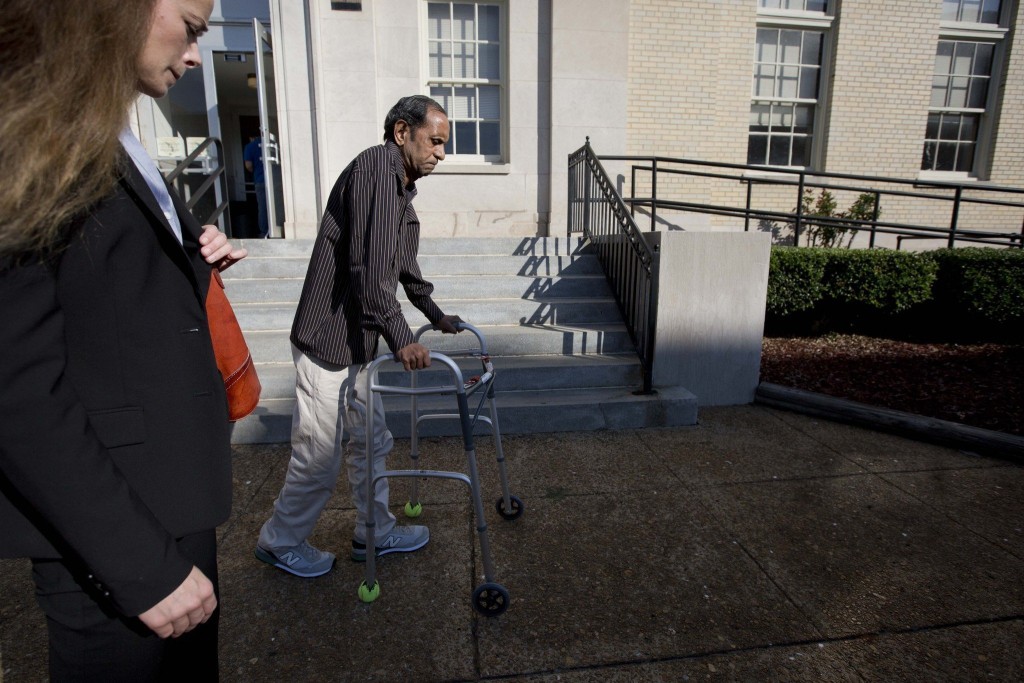
I just can’t even right now.
A mistrial has once again been declared in the excessive force trial of Alabama police officer Eric Parker, who was caught on dashcam video in February violently slamming 57-year-old Sureshbhai Patel to the ground during a routine pedestrian stop. Parker testified that Patel posed a dangerous threat to the officer, but video appeared to show Patel motionless and compliant in the moments prior to the brutal tackle that left the elderly grandfather partially paralyzed.
A first trial against Parker ended in a mistrial in September after 10 male (and non-Black) jurists voted to acquit; the jury’s sole Black female members sided with Patel. For retrial, Parker’s attorneys elected to go with a “full xenophobia” defense strategy: in opening arguments presented last month, they blamed Patel’s limited English proficiency and his non-citizen status for his assault.
WHNT reported this week that after three days of deliberation, the jury in Parker’s trial has once again deadlocked. The jury was composed of 9 women and 3 men. Four of the women are Black. It remains unclear what the breakdown of the votes were, but one thing remains certain based on the rhetoric presented by Parker’s defense: Parker’s actions were not on trial here, Patel’s Brownness is. Parker’s lawyers were not appealing to the jury’s sense of justice, they were appealing to the White jury members’ shared membership in Whiteness.
Such overtly racist line of reasoning further begs the question: how does racialized jury selection impact trial outcome. The second jury in the excessive force case against Eric Parker had strong representation of non-White individuals, but in a jury, it takes only one stubborn jury member to deadlock a vote. Stacking a jury with more jury members likely to be sympathetic to your reasoning — in this case, jury members more receptive to an argument about White identity politics — is likely to improve one’s odds for a mistrial or acquittal.
As mentioned, the first trial against Eric Parker — which resulted in a hung jury — consisted primarily of non-Black men. Only 16% of the jury included Black individuals, in a state where more than 1 in 4 residents are Black.
The practice of selecting or excluding jury members based on race is well-known and quietly practiced, if unconstitutional. We know that all-White jury members are more likely to convict Black defendants. It seems also possible (if still undocumented) that predominantly White juries might be more likely to acquit White defendants, and that defense attorneys may use their influence over jury selection to stack juries with racially sympathetic members.
This is, in fact, the alarming situation we are currently facing in another trial against another White-passing (if, mixed race Asian American) police officer. Former police officer Daniel Holtzclaw is charged with rape, assault and kidnapping committed against 13 Black women and girls. The majority of the jury members in Holtzclaw’s trial are male; all are White. Three Black men were among the jury members rejected from the pool of eligible jury members.
Our justice system depends upon guilt being decided by a jury of one’s peers, yet rarely do defendants face a jury that is truly representative of our multicultural society. Jury pools are legally required to be demographically representative of the surrounding jurisdiction, but jury selection still gives attorneys broad power to rig the racial makeup of a jury. In excluding people of colour by race from sitting on juries, society says that people of colour aren’t really “our peers”. People of colour are fundamentally disempowered from deciding justice, particularly against those accused of committing specific crimes that affect our communities. Justice too often goes undone.
It remains unclear — but unlikely — that prosecutors will seek a third excessive force trial against Eric Parker in the beating of Sureshbhai Patel.
Read also: Another Mistrial Declared For Alabama Cop Who Paralyzed Indian Grandfather (NBC News Asian America)
